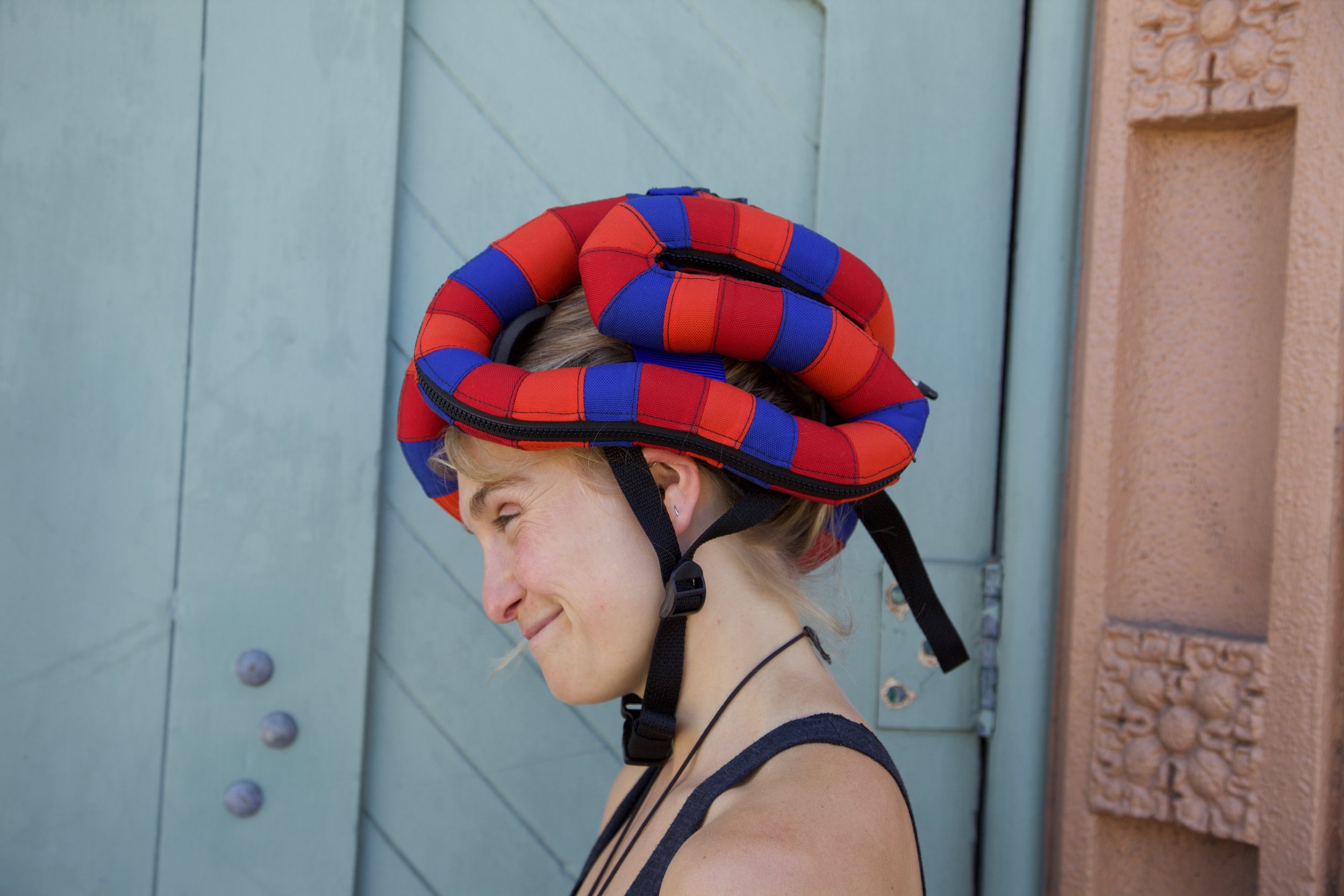Inflate Your Helmet
Bikes. Around here, we all love them. And we also love our heads. But the two can be precarious partners. Since their invention was hinted at in the 18-teens, bikes have had various successes at safety. The push-power(no pedals) Draisine of 1818 was probably the safest of the bunch (ie, slow).
But when pedals came along with the original Velocipede (aka Bone shaker due to its metal wheels) of the 1860s, people started going faster. The first "safety bicycle" of the 1890s (prompted both by the invention of the pneumatic tire and the chain drive), coupled with more paved roads, only meant we went even faster. For this bike, "safe" meant less jarring...
...but not actually safer. And so, the first bike helmet, the "hairnet," was born. It was strips of padding covered in leather running from front to back of the head-- good for scrapes, but not exactly for big falls.
It wasn't until 80 years later, during the US bike boom of the 70s, that the polystyrene-lined hard shell came about (unlike the many bicycle iterations, the helmet has undergone very few.) This leap in technology was meant to reduce acceleration to the head at impact, absorb shock, and dissipate the energy from the impact over a larger area over a longer period of time. In other words, be better at handling big falls. Most of the helmets on the market today still use this technology. Recently, though, it's been more and more apparent that it ain't perfect. While the polystyrene model protects from severe impact, it is too rigid to aid against smaller hits, and it is during these that concussions usually occur. In fact, unless the impact is hard enough to break the outer plastic shell, the helmet does almost nothing to dissipate energy.
And so, our inflatable helmet was born:
For now, we're just playing around with the idea and the design. But there's alot to be said for using air as padding. As structure, it's quite effective at dispersing energy because it deforms upon impact. So I guess we love bikes, our heads, AND air around here. We'll see where that goes...





